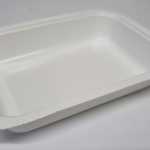The rising cost of living is a global phenomenon that affects everyone, from individuals to businesses. One area where this impact is particularly evident is in the packaging industry. As the cost of living continues to rise, the cost of materials and production for packaging also increases, affecting both consumers and businesses. In this article, we will examine the impact of rising living costs on packaging and explore some potential solutions.
One of the main ways in which rising living costs impact packaging is through the cost of raw materials. Many of the materials used in packaging, such as plastic, paper, and metal, are derived from natural resources, which are subject to market forces that affect their availability and cost. When the cost of living rises, the cost of these materials also increases, putting pressure on packaging manufacturers to find alternative sources of raw materials or pass on the increased costs to consumers.
Another way in which rising living costs impact packaging is through the cost of production. As the cost of living increases, so do the wages and benefits paid to workers, which can significantly increase the cost of production for packaging manufacturers. Additionally, other expenses like rent, utilities, and transportation also increase, further adding to the cost of production. These increased costs are often passed on to consumers in the form of higher prices.
The impact of rising living costs on packaging is felt by consumers in several ways. First and foremost, consumers are likely to see an increase in the prices of packaged goods. This can be particularly challenging for those on fixed incomes or tight budgets who may struggle to afford the necessities of life. Additionally, rising packaging costs may lead to a reduction in the size or quality of the packaging, as manufacturers look for ways to cut costs while maintaining profitability.
Businesses that rely on packaging also face challenges as living costs rise. Higher packaging costs can eat into profit margins, making it more difficult for businesses to remain competitive. This can be particularly challenging for small businesses that may not have the resources to absorb the increased costs. Additionally, higher packaging costs may lead to a reduction in the quality or quantity of the packaged goods, which can negatively impact customer satisfaction and loyalty.
One potential solution to the impact of rising living costs on packaging is to invest in more sustainable packaging materials and practices. While the upfront costs of these solutions may be higher, they can ultimately save businesses money by reducing waste and improving efficiency. For example, using biodegradable packaging materials like plant-based plastics or recycled paper can reduce the environmental impact of packaging while also reducing costs in the long run.
Another solution is to explore alternative packaging designs that reduce the amount of material needed. This could involve using thinner materials, smaller containers, or more efficient packaging designs that minimize waste. By reducing the amount of packaging needed, businesses can save on material and production costs while also reducing their environmental impact.
In conclusion, the impact of rising living costs on packaging is significant, affecting both consumers and businesses. The rising cost of raw materials and production can lead to higher prices, reduced quality, and decreased customer satisfaction. However, by investing in more sustainable packaging materials and practices and exploring alternative packaging designs, businesses can mitigate these impacts while also reducing their environmental footprint. As the cost of living continues to rise, it is essential for businesses to adapt and find innovative solutions to the challenges posed by higher packaging costs.




